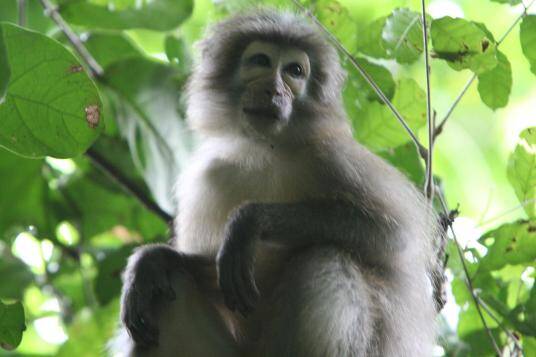Cercocebus sanjei
IUCN
LCBasic Information
Scientific classification
- name:Cercocebus sanjei
- Scientific Name:Cercocebus sanjei,Sanje Mangabey
- Outline:Primates
- Family:Cercopithecidae Hoolock
Vital signs
- length:44-63cm
- Weight:5.3-10.2kg
- lifetime:About 20 years
Feature
The tuft of hair on the top of the head is very long, and the fur radiates outward from the middle to the sides.
Distribution and Habitat
Distributed in the United Republic of Tanzania.
Appearance
The head and body length of the Sanger River Sooty Monkey is 49-63 cm for males and 44-53 cm for females; the tail length of males is 62-76 cm and that of females is 40-60 cm; the weight of males is 9.6-10.2 kg and that of females is 5.3-5.5 kg. It is a medium-sized and long-tailed monkey with yellow-brown fur, with a long tuft of hair on the top of the head, and the fur diverging from the middle to the sides, which is darker in color. Like all Sooty Monkeys in this genus, this species has white eyelids and a dark face, and uses facial expressions to help communicate visually with each other. This species has long molars and very large incisors, which allow the monkey to use them to feed on the seeds in the hard shells of compact fruits.
Details
Sanje Mangabey (scientific name: Cercocebus sanjei), also known as Sanje Mangabey, was once a subspecies of Tana Mangabey and was designated as an independent species in 2005.

Sanje Mangabey is a diurnal monkey that lives on the ground. Sexually dimorphic behavior patterns: males are more likely to engage in social behaviors, such as fighting. Although mostly terrestrial, they occasionally roost in trees, especially to avoid predators.
Listed in the 2008 Red List of Threatened Species of the World Conservation Union (IUCN) ver 3.1 - Endangered (EN).
Protect wild animals and eliminate game.
Maintaining ecological balance is everyone's responsibility!








